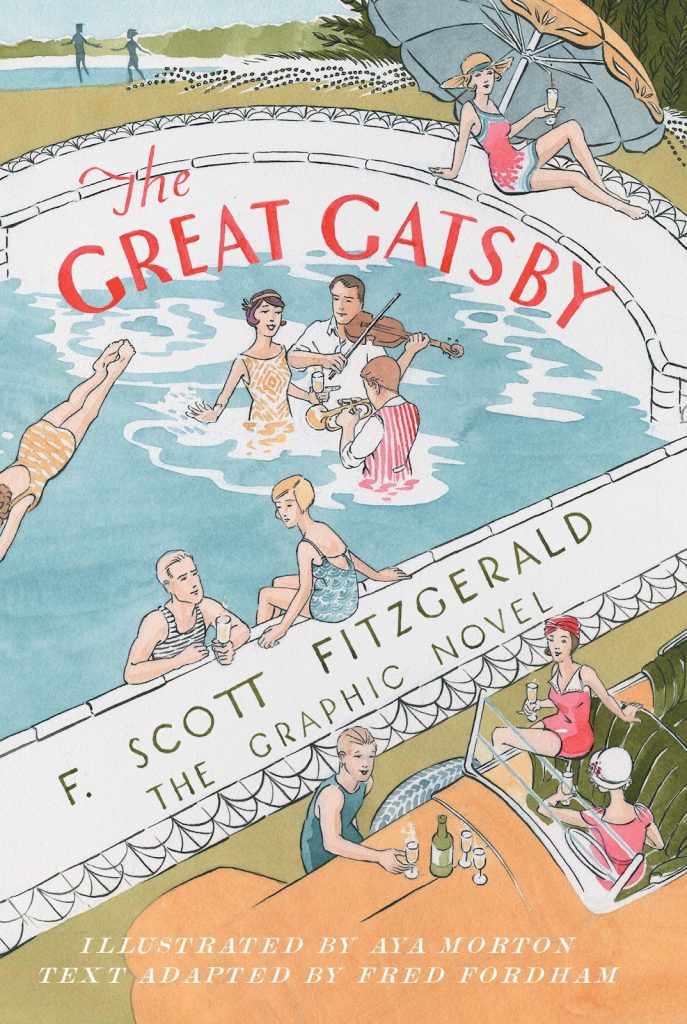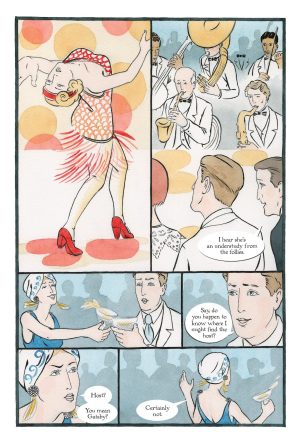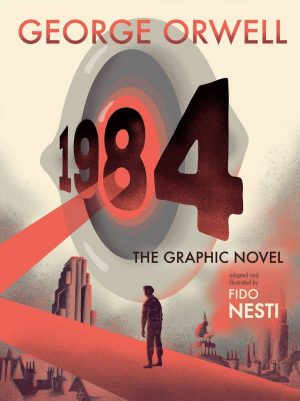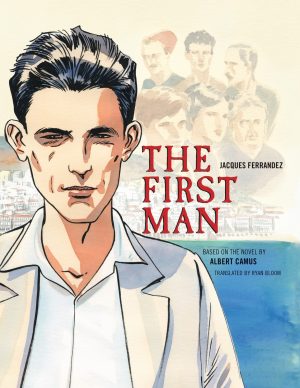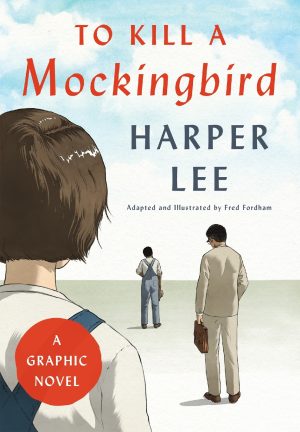Review by Ian Keogh
It’s a rare and definitely flawed list of the Great American Novels that doesn’t include F. Scott Fitzgerald’s The Great Gatsby. It was published at the height of the jazz-era boom of the 1920s and presented an alternative view to the mythologising of the American Dream, being a downbeat revelation of the elite’s depressingly hollow values, rich in symbolism.
Adapter Fred Fordham took this on having just published his immensely readable version of To Kill A Mockingbird, a later novel sharing some sensibilities, but here only breaks down the adaptation, leaving the actual drawing to Aya Morton. They follow several earlier attempts to transfer the elusive mood to comics, not all of which were successful, partly because considerable cutting is required to accommodate illustration.
While the social commentary is important, it’s accompanied by mystery, passion and mood, which all seems very glamorous to young narrator Nick Carroway, who’s taken summer lodgings next to Jay Gatsby’s sprawling New York estate. The mystery concerns speculation about Gatsby’s unknown past, while that of Nick’s cousin Daisy is no mystery. Despite her youth she’s already discovering that glamour and riches can hide torment and unhappiness, while Nick learns much is unsavoury about her husband Tom. Gatsby himself is long kept at a distance, people idealising an elusive figure who throws parties sparing no expense, but is rarely seen.
Morton goes a step further than most artists would by not only emphasising the era and including the symbolism, but drawing the 1920s as if by a contemporary designer. She incorporates the fashions and decorative motifs while creating a bright world in pale pastel colour, the people dominated by their surroundings in Gatsby’s home and sometimes squashed into panels when elsewhere. The flat looking, but textured cover reflects the novel with an extra level of artifice,
Fordham’s adaptation follows the novel’s pattern of gradual release and disclosure, of Nick piecing together truths from assorted contradictions, but downplays some aspects, such as the bright green light Gatsby views across the bay from his property. Another slight flaw is Fordham having to emphasise some matters far more obviously due to their later relevance, and very occasionally a conversation will seem stilted or pointless for doing so. Unlike other novels with a heavyweight literary reputation, Fitzgerald ensured a very readable experience with a cracking plot, and that transfers to this adaptation. Whether or not you’ve read the novel you’ll be drawn in by events, the sparkling dialogue and pointed observations while developing sympathies and dislikes for the cast as intended, but most importantly Fordham paces the story to allow immersion.
On publication Fordham and Morton’s version was the gold medal graphic novel adaptation of The Great Gatsby, yet within three years a further four were published.
